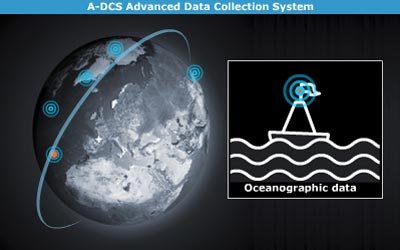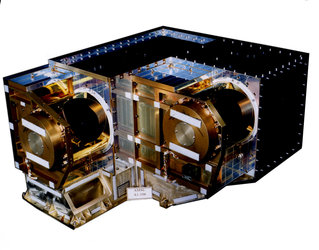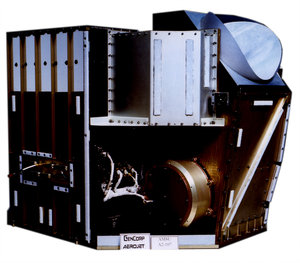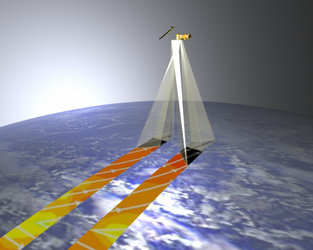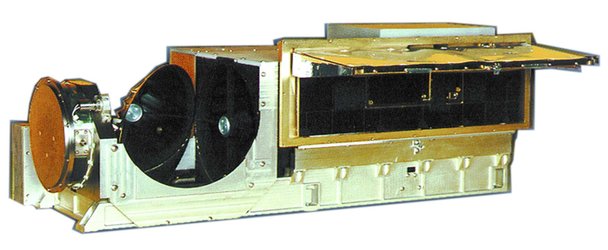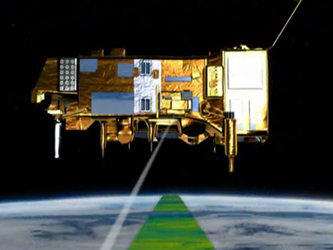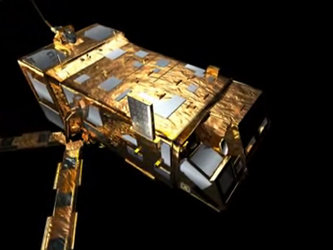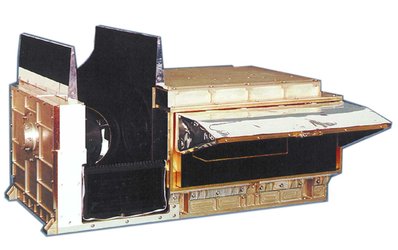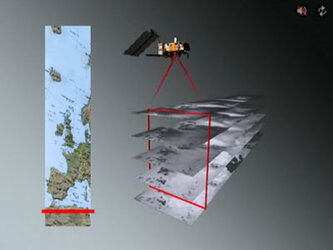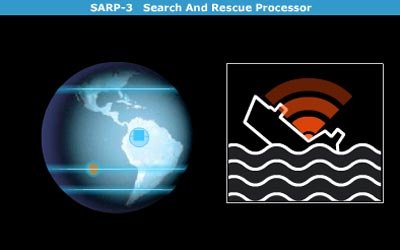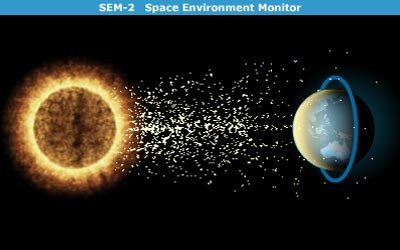Technical summary
Advanced Data Collection System (ADCS) CNES
Collection of oceanographic, atmospheric and/or meteorological 400 bit/s or 4800 bit/s data on 401.65 MHz from platform transmitters (PTT) on buoys, ships, land sites and balloons worldwide for later relay to ground via X-band and HRPT. Determines PTT location by Doppler. Can transmit to PTTs on 466 MHz at 200 bit/s or 400 bit/s. 24 kg, 7.5 kbit/s, 64 W.
Advanced Microwave Sounding Unit (AMSU-A1/A2) NOAA
Step-scan 15-channel microwave radiometers for 50 GHz oxygen absorption line, 2000 km swath, IFOV 30 km (nadir). A1/A2: 55/50 kg, 2.1/1.1 kbit/s, 78/30 W.
Advanced Scatterometer (ASCAT) ESA
5.255 GHz C-band radar scatterometer with three dual-swath (2 x 500 km width, offset 384 km left/right of ground track) antennas (fore/mid/aft) for measurement of radar backscatter at three azimuth angles to provide surface wind vectors of 4-24 m/s with accuracy ± 2 m/s & ± 20°, spatial resolution 50 km (25 km experimental), 0.57 dB radiometric accuracy. Incidence angle range 25-65°, 10 ms pulses of 120 W peak power. Additional products such as sea-ice cover, snow cover and vegetation density. 270 kg, 60 kbit/s, 251 W.
Advanced Very High Resolution Radiometer (AVHRR/3) NOAA
6-channel visible/IR (0.6-12 µm) imager, 2000 km swath, 1 x 1 km resolution. Global imagery of clouds, ocean and land. 35 kg, 622/39.9 kbit/s (high/low rate), 27 W.
Global Ozone Monitoring Experiment (GOME-2) ESA/EUMETSAT
Scanning spectrometer, 250-790 nm, resolution 0.2-0.4 nm, 960 km or 1920 km swath, resolution 80 x 40 km or 160 x 40 km. Double monochromatic design: first stage of quartz prism with physical separation of four channels (240-315, 311-403, 401-600, 590-790 nm); second stage of blazed grating in each channel. Detector: 1024-pixel random-access Si-diode arrays. Ozone total column & profiles in stratosphere & troposphere; NO2 BrO OClO ClO. Albedo and aerosol; cloud fraction, cloud-top altitude, cloud phase. 73 kg, 40 kbit/s, 45 W.
GNSS Receiver for Atmospheric Sounding (GRAS) ESA/EUMETSAT
GPS satellite occultation (up to 500/day) receiver for bending angle measurement better than 1 µrad, fitting data to stratospheric model for temperature profile (vertical sounding of ± 1K with vertical resolution of 150 m in troposphere (5-30 km altitude) and 1.5 km in stratosphere), retrieval of refractive index vs. altitude profile. 30 kg, 60 kbit/s, 42 W.
High-resolution Infra-Red Sounder (HIRS/4) NOAA
20-channel optical/IR filter-wheel radiometer, 2000 km swath, IFOV 17.4 km (nadir). 35 kg, 2.9 kbit/s, 21 W. Replaced on MetOp-C by IASI.
Infrared Atmospheric Sounding Interferometer (IASI) CNES/EUMETSAT
Fourier-transform spectrometer, 3.62-15.5 µm in three bands. Four IFOVs of 20 km at nadir in a square 50 x 50 km, step-scanned across track (30 steps), synchronised with AMSU-A. 2000 km swath. Resolution 0.35 cm-1. Radiometric accuracy 0.25-0.58K. Integrated near-IR imager for cloud discrimination. Water vapour sounding, NO2 & CO2 , temperature sounding, surface & cloud properties. 251 kg, 1.5 Mbit/s, 240 W.
Microwave Humidity Sounder (MHS) EUMETSAT
5-channel quasi-optical heterodyne radiometer, 190 GHz (water vapour absorption line), 89 GHz (surface emissivity), 2000 km swath, IFOV 16 km (nadir). 66 kg, 3.9 kbit/s, 89 W.
Search & Rescue (SARP-3/SARR) CNES/NOAA
Relay of distress beacon signals; 121.5/243.0/406.05 MHz uplink from EPIRB (Emergency Position Indicating Rescue Beacon), 1544.5 GHz 2.4 kbit/s downlink. 35 kg, 77 W.
Space Environment Monitor (SEM-2) NOAA
Multi-channel charged particle spectrometer as part of NOAA's 'Space Weather' activities. Total energy of electron & proton fluxes 0.05-1 keV and 1-20 keV; directional & omni measurements in six bands 30-6900 keV for protons and three bands 30-300 keV for electrons. 18 kg, 166 bit/s, 6 W.



